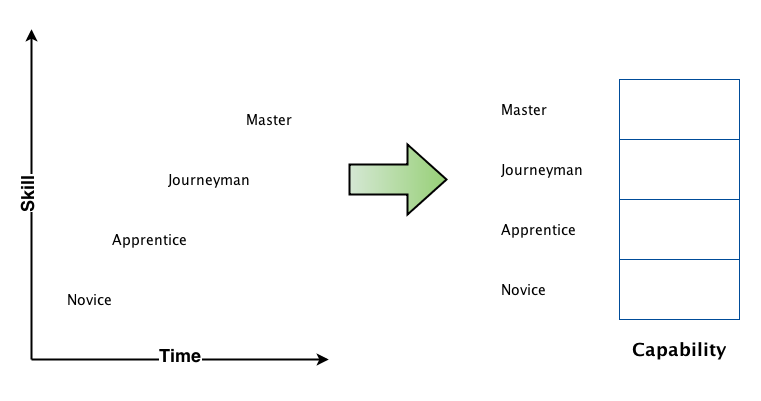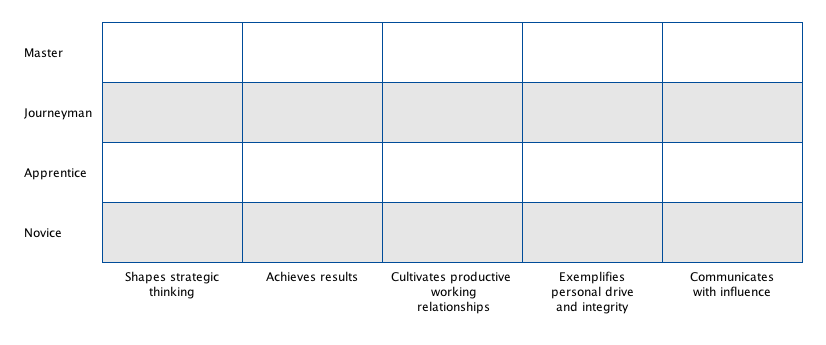While it’s great to approach your profession as a craft and adopt a general model of craftsmanship, the next level of rigour requires adding some frameworks to ensure measurability and progress assessment. Again, this is great at a personal level, but also adds immense value from a team management perspective.
To enable the introduction of a framework, lets take the general model introduced earlier and collapse it into a column vector:
At this level of abstraction you can see the inherent flexibility in this framework – you can pretty much extend it to add as much or as little complexity as you want or your environment warrants. Here’s an example:
If you wanted to (or had to), you could even overlay this on something like the Australian Public Service Commission’s Integrated Leadership System:
Note that’s only at the top level of the ILS. You can keep drilling down and add more detail as required. Having said that, the ILS is seriously well developed and documented (as one would expect from a Government Department), so I wouldn’t necessarily do it at any detailed level if I worked at an Agency using it. Just pointing out that the framework can be used even where a complex performance management model already exists.
If you were to use it personally, you can just sit down and fill the matrix to map out what you needed to do to get to the next level. For a team, either the manager or the team could build this out, with clear expectations around what operating at each level means and an easy representation for discussion.
In any case, there you have it: how to use the craftsperson model with a formalised framework to introduce metrics and measureability. Enjoy.





Trackbacks/Pingbacks